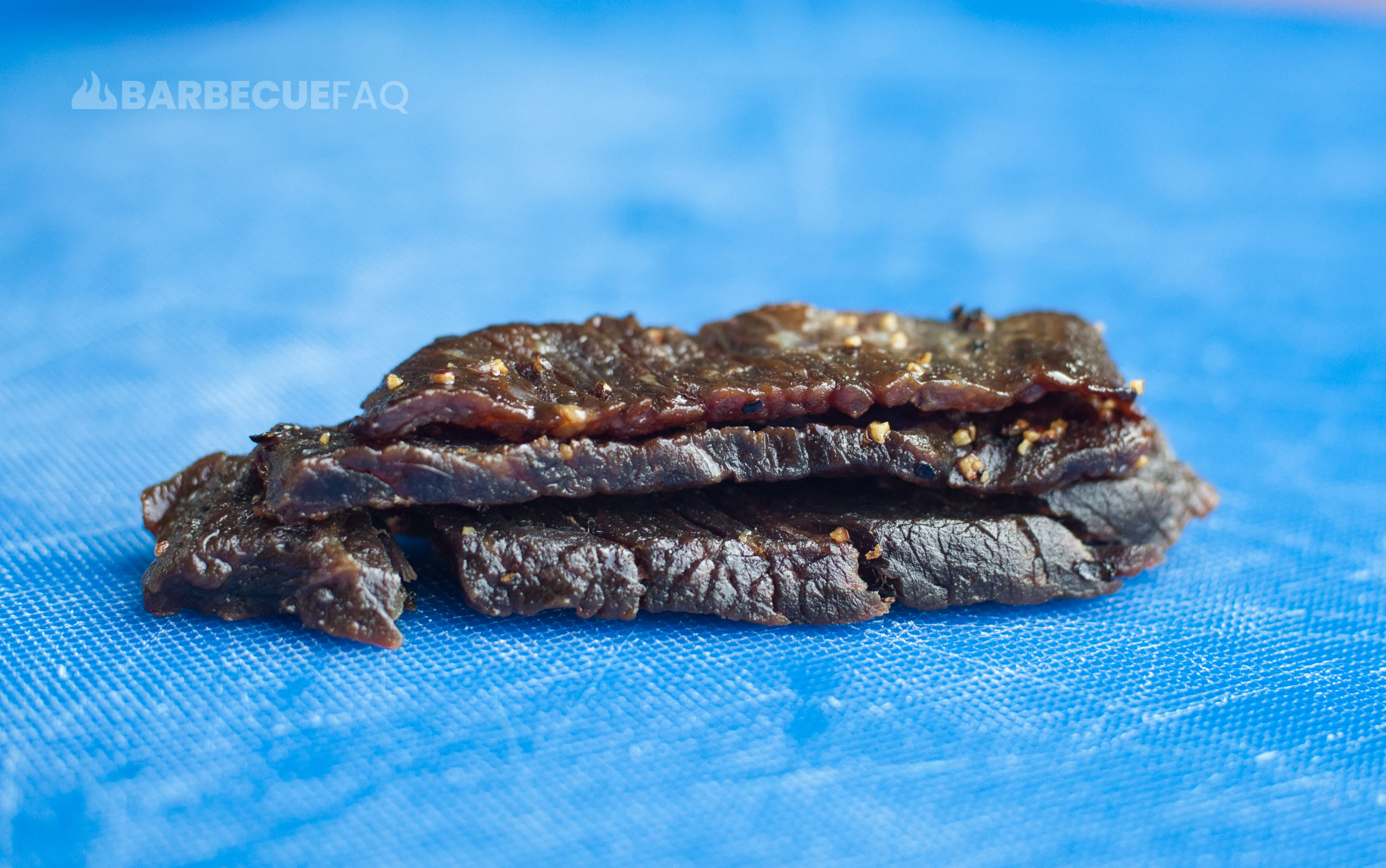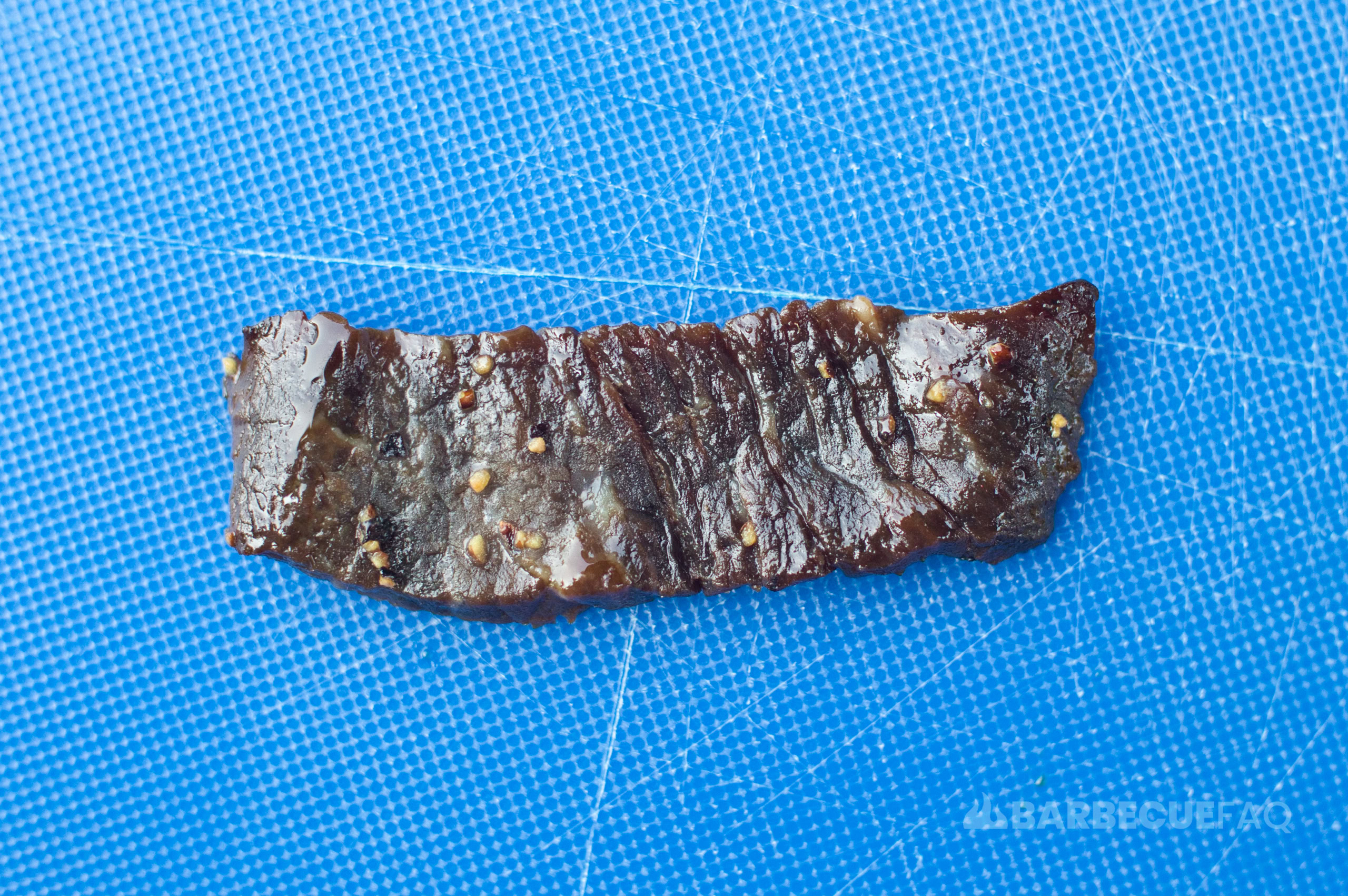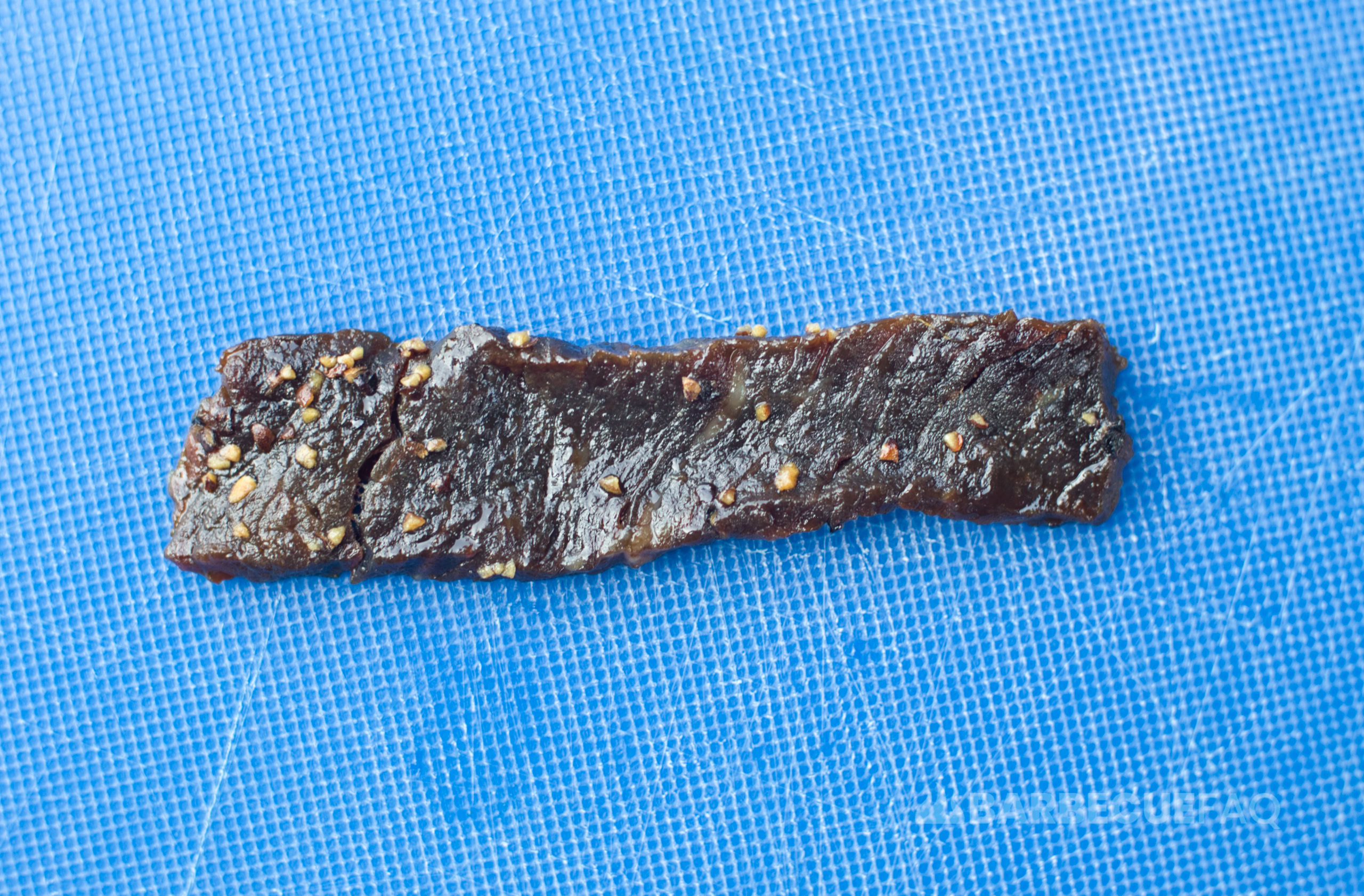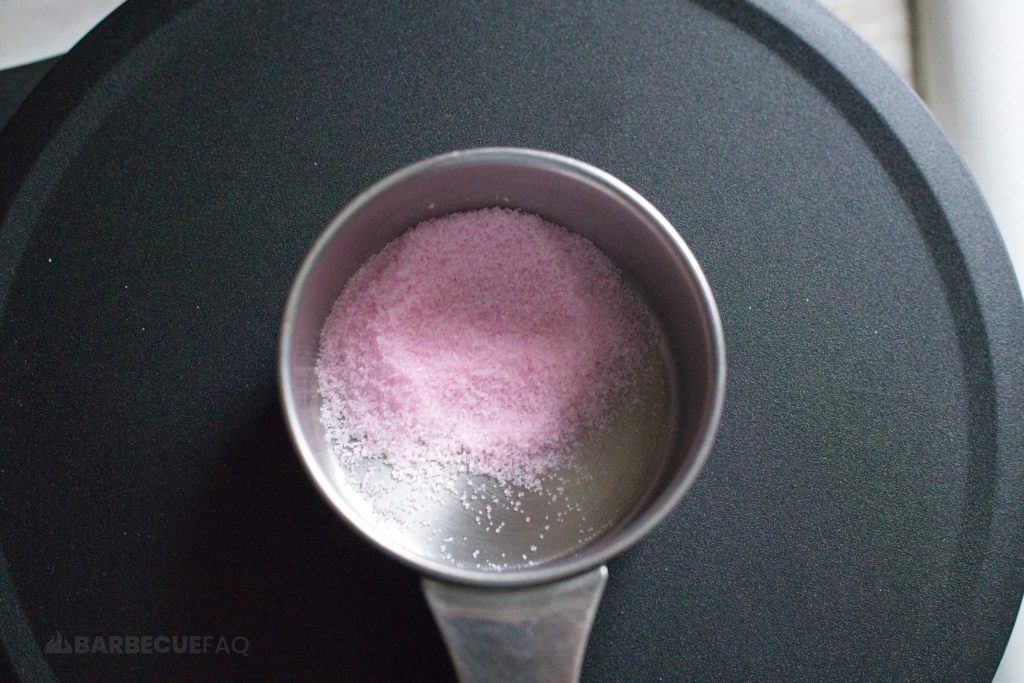As someone who has followed nearly the same exact process for making beef jerky for over 15 years, I can say that in most cases it takes ~3-5 hours to dehydrate jerky.
Typically I set a timer for 3 hours and check – in most cases the beef jerky is finished.

Thickness of Your Slices Directly Affects Drying Time
Most people recommend that you slice beef jerky to a thickness of between 1/8 – 1/4″ thick.

There are a couple of reasons for this:
- Thicker pieces take much longer to dehydrate
- Thicker pieces are less palatable and are more chewy – this is especially true if you prefer to slice your jerky with the grain.
- Marinating is impacted – aside from salt, most ingredients will barely penetrate meat. Slicing thinner increases the potential for flavor.
- From a consumer perspective, jerky is meant to be a snack. Meaning it isn’t optimal to have 5-ish thick pieces (packaged based on weight) that you then force your customer to tear into smaller pieces.
Those are the main reasons, the one that’s pertinent to this article is that it takes longer to dehydrate.
To prove this, I sliced several pieces of jerky to various thicknesses and then dehydrated them.
Experiment parameters:
- London broil (from the chuck) is being used.
- I used a honey teriyaki marinade.
- All jerky was hand measured and sliced to the following thicknesses: 1/8″, 1/4″, and 1/2″.
- Jerky was heat treated in my oven @ 350F for 10 minutes.
- Jerky was dehydrated at ~140F in my Avantco Dehydrator.
Here’s the 1/8″ after dehydrating, it finished after 1 hour and 45 minutes.

Here’s the 1/4″ after dehydrating, it finished after 2 hours and 53 minutes.

Here’s the 1/2″ after dehydrating, it finished after 6 hours 40 minutes.

The 1/8-1/4″ were bend tested where-as the 1/2 was tear tested to verified dryness.
So, from the above we know it takes far longer to dehydrate thicker pieces of beef jerky.
Thicker pieces also affect palatability and impact how easy the meat is to chew, store, package, etc.
Note: I did consider doing 3/4″ but that’s essentially the thickness of a steak (most steaks are 0.75 – 1.25 inches thick). Those thicknesses are typically used when air drying biltong for an extended period of time.
Even then, the whole air dried steak is sliced super thin against the grain.
From the above, my preference is 1/4″ thick but 1/8″ is also totally fine. While I did use a ruler to measure all of the above slices, I simply eye-ball 1/8-1/4″ slices when I go cut meat for jerky.
How Does Dehydration Temperature Affect Drying Time?
To start, I heat treat my jerky in an oven set to 350F for ~10 minutes – this is typically how long it takes 1/8-1/4″ thick slices of beef to reach 158F internal.
BUT the main reason I do this because I like to dehydrate at a lower air temperature as doing so makes the jerky softer.
From there, I typically dehydrate my jerky at around ~120-140F.
Note: This is actually what’s recommended by the USDA – pre-heat treatment in your oven and then dehydrating in your device at around 130-140F.
I know this process will take my jerky ~3 hours to finish.
But if you’re in the camp of no pre-heat treatment and you dehydrate at 160F – your jerky may finish faster, but still fall within that ballpark of ~3-5 hours.




